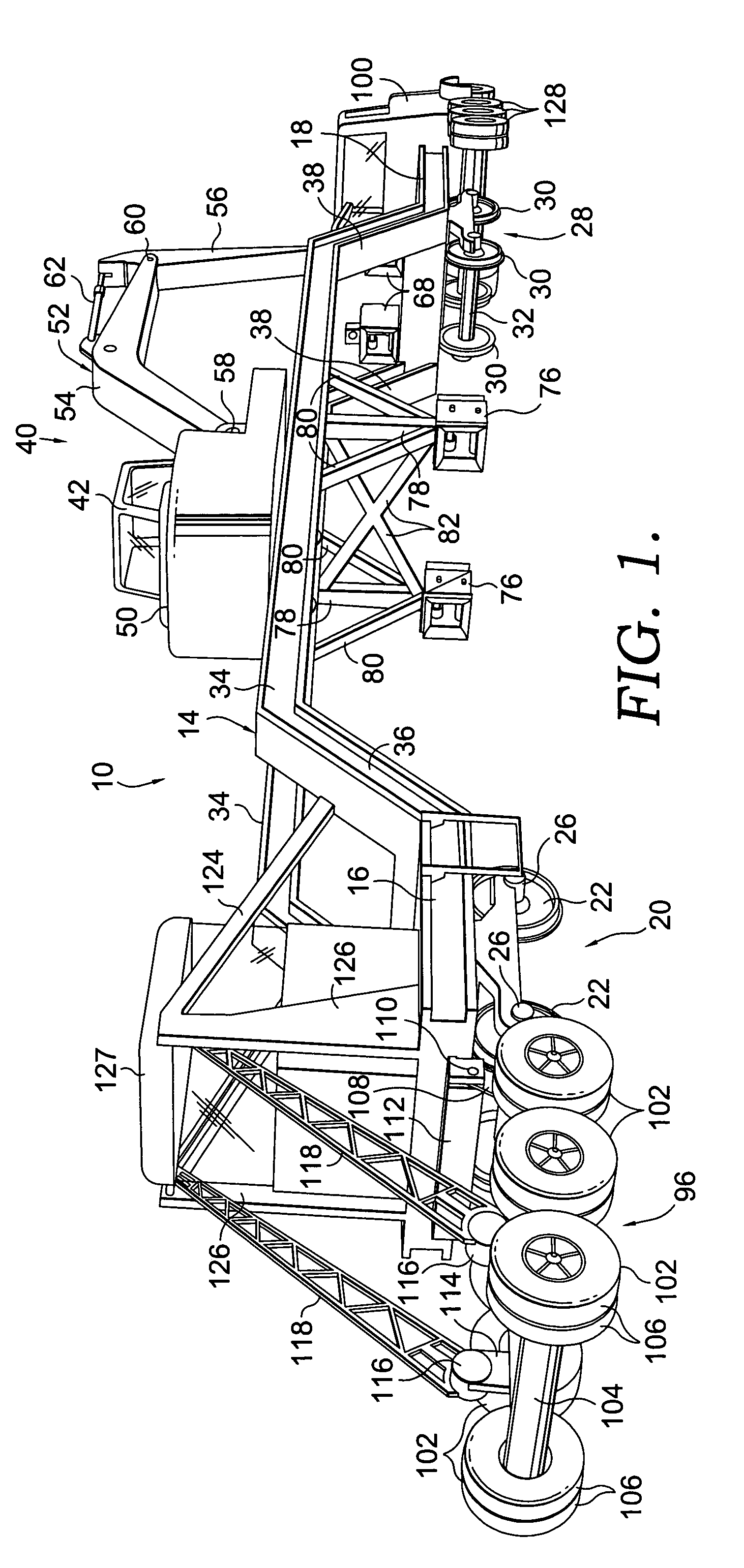Method and apparatus for unloading ribbon rails from rail cars
a technology for unloading ribbon rails and rail cars, which is applied in the direction of transportation items, refuse gathering, and ways, etc., can solve the problems of increasing labor requirements, increasing the difficulty of laying track, and requiring a considerable amount of manual labor, so as to reduce the danger of personal injury and reduce labor requirements
- Summary
- Abstract
- Description
- Claims
- Application Information
AI Technical Summary
Benefits of technology
Problems solved by technology
Method used
Image
Examples
Embodiment Construction
[0023]Referring now the drawings in more detail, numeral 10 generally designates a specially constructed rail car which is used for the unloading of elongated ties such as the ribbon ties 12 which are shown in FIG. 3 and which are formed by welding rail sections together end to end. The ribbon ties 12 may each have a length up to 1800 feet or more.
[0024]The rail car 10 has a rigid frame which is generally designated by numeral 14 and which includes on its back end a generally horizontal platform 16 and on its front end a generally horizontal platform 18. The rear platform 16 is equipped with a pair of flanged wheel assemblies 20 each of which includes a pair of flanged wheels 22 for application to a railroad track 24. The wheels 22 on opposite sides of the frame are mounted on axles 26. The front platform 18 is similarly mounted on a pair of front wheel assemblies 28 each including a pair of flanged wheels 30. The wheels 30 on opposite sides of the frame are mounted on axles 32. The...
PUM
 Login to View More
Login to View More Abstract
Description
Claims
Application Information
 Login to View More
Login to View More - R&D
- Intellectual Property
- Life Sciences
- Materials
- Tech Scout
- Unparalleled Data Quality
- Higher Quality Content
- 60% Fewer Hallucinations
Browse by: Latest US Patents, China's latest patents, Technical Efficacy Thesaurus, Application Domain, Technology Topic, Popular Technical Reports.
© 2025 PatSnap. All rights reserved.Legal|Privacy policy|Modern Slavery Act Transparency Statement|Sitemap|About US| Contact US: help@patsnap.com



